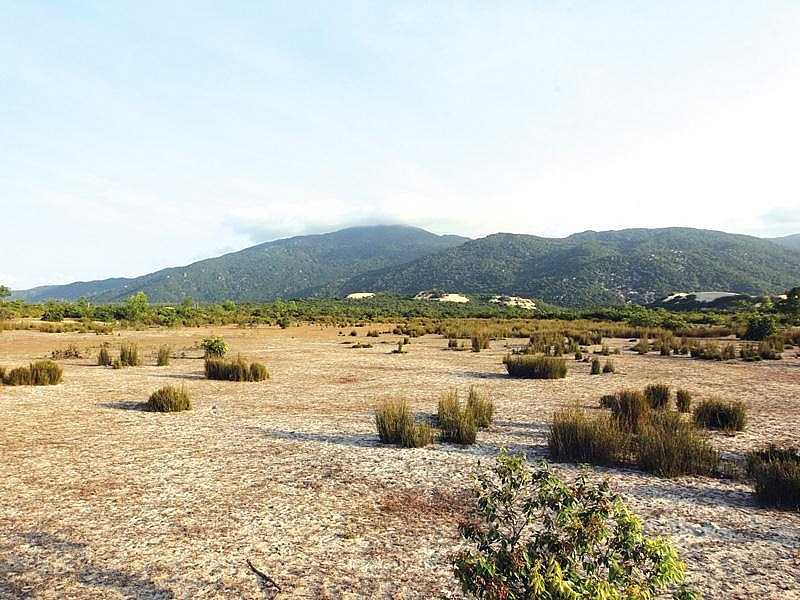Vietnam to review long-delayed projects
 |
| Vietnam to review empty-promise projects |
Numerous large-scale projects are delayed in construction
Along with the $3.2-billion Vung Ro refinery and petrochemical complex, invested by Vung Ro Petroleum Co., Ltd (VRP), there are numerous large-scale projects standing still in Vietnam.
The first one is the $1.2 billion First Solar project invested by First Solar Vietnam Manufacturing Co., Ltd., a subsidiary of US-based First Solar Technology Group. In January 2011, the Ho Chi Minh City Export Processing Zones Management Authority (Hepza) granted an investment certificate for the investor to develop a factory producing thin-film solar power panels and semi-finished products.
The first phase’s construction was kicked off in March 2011 and was expected to be completed in 19 months. However, the construction of the project was suspended after eight months due to supply-demand imbalance in the world solar market.
In July 2012, First Solar Group announced plans to sell its factory and leave Vietnam.
However, after years of looking for suitable investors to take its place and carry out the project, in mid-2017, First Solar (US) has decided to resume the project and implement other projects in Vietnam. In mid-January, 2018, it announced that it is stepping up its recruitment to kick-off its operations in Ho Chi Minh City in the fourth quarter of 2018.
| Cities and provinces need to divide large-scale projects into two groups (feasible and unfeasible) and recover unfeasible projects. |
The second one is Berjaya Corporation Bhd.’s Vietnam International University Township (VIUT) project with the total investment capital of $3.5 billion. After eight years of delay in construction, the Ho Chi Minh City People’s Committee requested the city Department of Planning and Investment to either resolve any difficulties that the Malaysian company is having in implementing the project or revoke the investment certificate.
However, the investor told VIR that it plans to kick-off the construction of the project early this year, however, to date, the construction has been immobile.
In Ba Ria-Vung Tau province, numerous projects have been immobile for nearly a dozen years since licencing, including the $900-million Dragon Sea project and the $4.1-billion Saigon Atlantic.
Another one is the $1-billion Kobelco steel plant in Nghe An province. Licensed in 2010, Japanese Kobe Steel’s plant was to operate at a capacity of 2 million tonnes per year. The raw material for steel production would be sourced from Thach Khe Iron Mine in Ha Tinh and the coal from Quang Ninh. At present, the investor has been silent about the date of starting construction.
Seeing that numerous projects are either immobile or being postponed, Prof. Nguyen Mai, former vice chairman of State Committee for Cooperation and Investment (now the Ministry of Planning and Investment or MPI) proposed MPI to assign locals to divide large-scale projects into two groups (feasible and unfeasible) and recover unfeasible projects.
Brighter spots in FDI picture
While the $3.2-billion Vung Ro refinery and petrochemical project had its investment certificate revoked, on February 24 Thailand’s SCG, one of the leading conglomerates in the ASEAN, officially kicked off the construction of its long-awaited Long Son Petrochemical Complex after more than ten years of development.
The approximately $5.4-billion project is positioned as Vietnam’s first integrated petrochemical complex that will produce up to 1.6 million tonnes of olefins per year.
Once the project comes into operation, it will generate 15,000-20,000 jobs and contribute $60 million to the national budget per year for 30 years since the date it starts commercial operation.
Along with starting to develop the project, SCG expressed intentions to acquire the remaining 29 per cent stake in the $5.4-billion Long Son Petrochemical (LSP) complex from PetroVietnam to increase its holdings to 100 per cent, according to a document sent to Prime Minister Nguyen Xuan Phuc.
Another example is Samsung. According to statistics published by the conglomerate, in 2017 the group earned a consolidated revenue of $212 billion and after-tax profit of $37.3 billion, signifying increases of 19 and 86 per cent.
Samsung Vietnam contributed a large part to the consolidated revenue and profit of the group. Notably, Samsung’s four arms, including SEV-Bac Ninh, SEVT-Thai Nguyen, SDV-Bac Ninh, and SEHC-Ho Chi Minh City earned $61.5 billion in revenue and $5.8 billion in net profit, making up 29 and 16 per cent the group’s revenue and profit.
These above statistics show that along with projects that turned out to be little more than empty promises, numerous foreign investors have set solid footholds in Vietnam.
What the stars mean:
★ Poor ★ ★ Promising ★★★ Good ★★★★ Very good ★★★★★ Exceptional
 Tag:
Tag:
Related Contents
Latest News
More News
- PM orders investment model for North–South high-speed rail (December 22, 2025 | 17:43)
- First members of Danang International Finance Centre revealed (December 22, 2025 | 17:39)
- Securing capital and efficiency for Vietnam’s 2026-2030 growth ambitions (December 17, 2025 | 10:00)
- Driving double-digit growth through green and circular transformation in Vietnam (December 17, 2025 | 09:00)
- Vietnam bucking trend in the global M&A landscape (December 16, 2025 | 14:20)
- Vietnam’s green transition demands collective financial action (December 15, 2025 | 12:00)
- VIR workshop highlights capital and policy for sustainable development (December 15, 2025 | 11:00)
- National Assembly approves pilot mechanisms to accelerate major projects in Hanoi (December 12, 2025 | 11:29)
- Vietnam eases policy approval requirements, simplifies foreign and outbound investments (December 11, 2025 | 17:53)
- Unpacking new momentum in Vietnam’s M&A market (December 10, 2025 | 09:59)


























 Mobile Version
Mobile Version